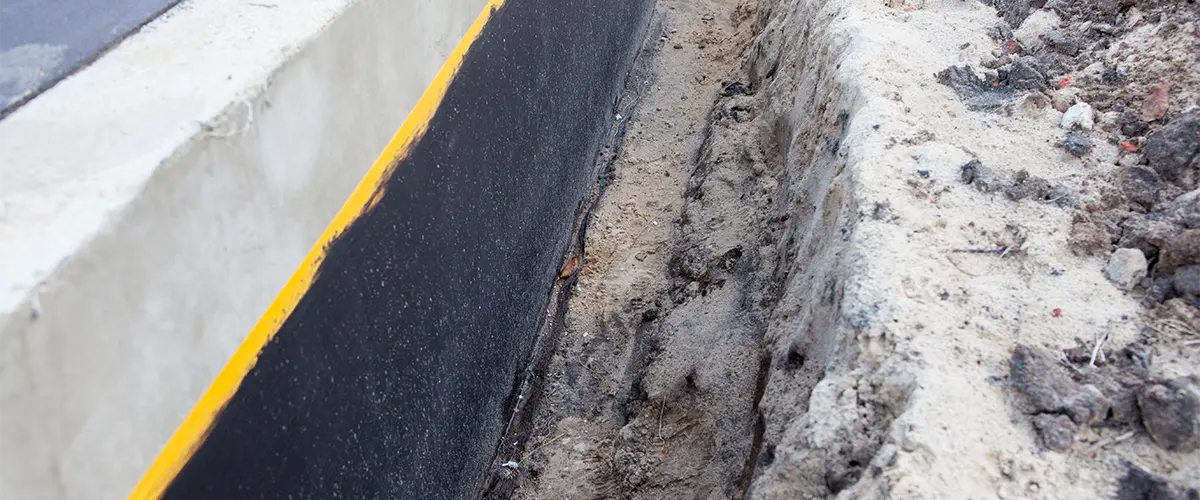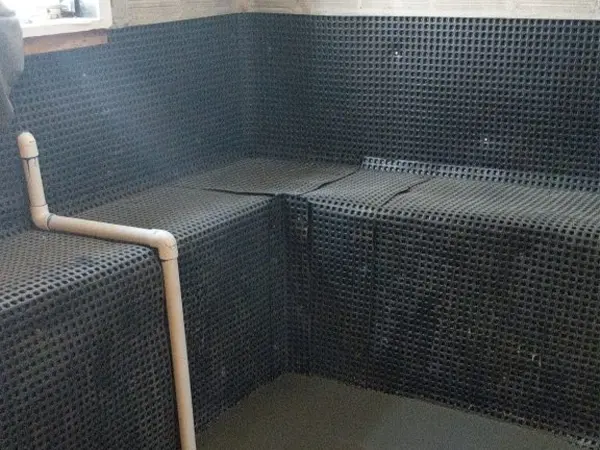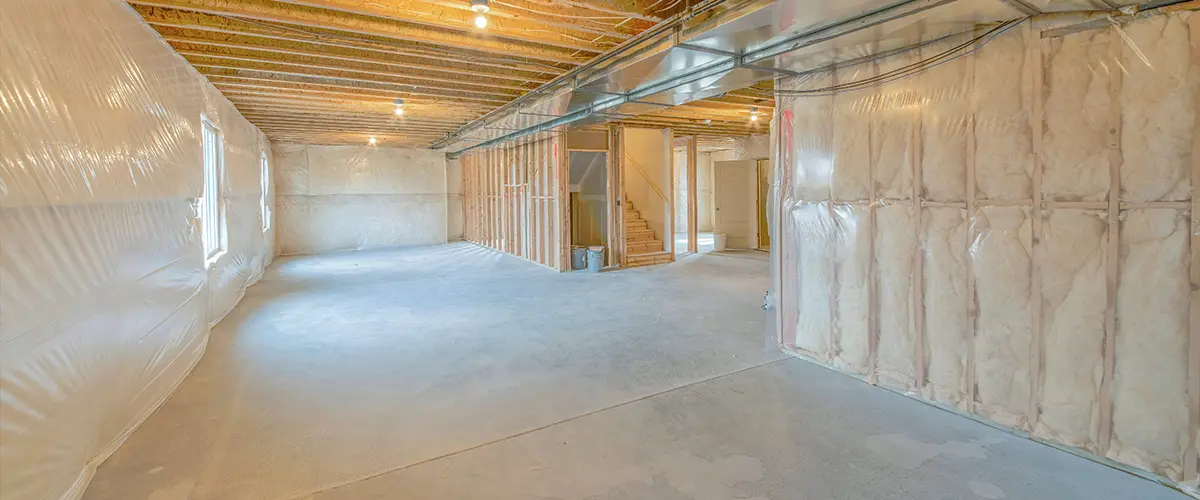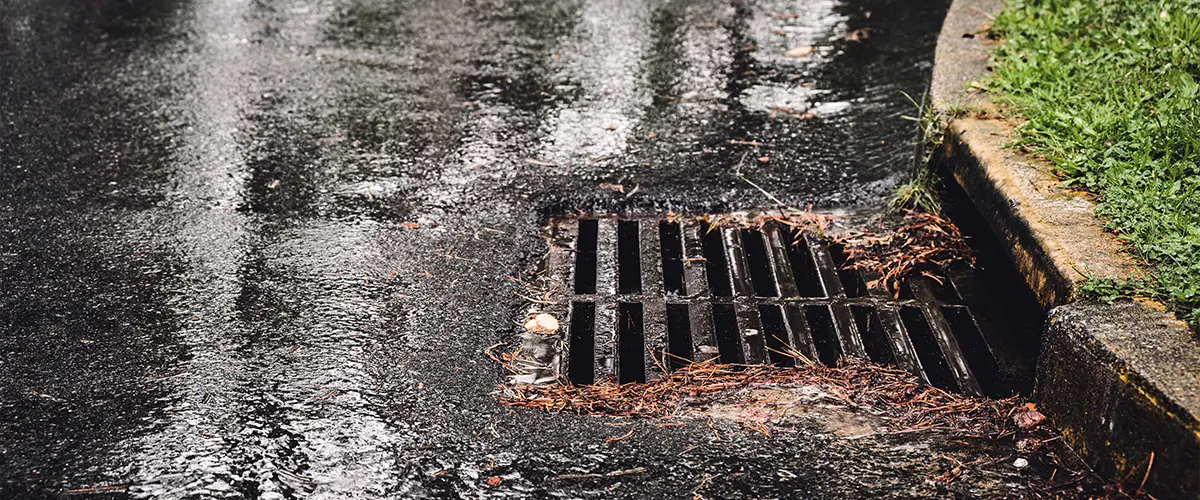Dealing with water infiltration in your home can be a nightmare. Choosing the right waterproofing solution is critical to protect your property and your investments, but impossible to do it by yourself.
In this blog post, we’ll explore the differences between interior vs exterior waterproofing methods, helping you understand their pros and cons so you can make the best decision for your home.
Let’s begin!

Key Takeaways
- Interior waterproofing is a more affordable option that focuses on managing water that has already entered the home.
- Exterior waterproofing prevents water infiltration from occurring in the first place by targeting potential entry points at your home's foundation walls.
- Exterior waterproofing is generally considered more effective than interior waterproofing
- Access and installation, upfront cost, maintenance requirements, and effectiveness are all important factors to consider when choosing between interior and exterior waterproofing methods.
- The best choice for your situation will depend on several factors like budget constraints, severity of water infiltration problems experienced by your home, location/climate condition (heavy rainfall or flood), age of your basement/crawlspace among others.
Interior Vs Exterior Waterproofing
Let’s see what are the main differences between interior waterproofing vs exterior waterproofing.
Interior Waterproofing
Interior waterproofing, a more affordable option than exterior basement waterproofing, focuses on managing water that has already entered the home.
This method typically involves installing an interior drainage system, such as a sump pump or French drain, which work together to collect and pump out any accumulated water inside your basement or crawlspace.
While interior waterproofing systems aim at addressing existing moisture problems in basements or crawlspaces using less labor and material compared to exterior methods, they are often considered a remedial solution rather than prevention.
One of the main distinctions between these two approaches lies not only in cost but also effectiveness.


Exterior Waterproofing
Exterior waterproofing solutions may be pricier due to increased labor requirements and amount of materials utilized during installation process, such as excavating soil.
However, this method offers lasting results with lower maintenance required over time compared with its counterpart. Exterior waterproofing is ideal to get rid of a wet basement, but it’s an extensive project that can take time and money to properly be taken care of.
Here at Capstone Waterproofing Solutions, we offer homeowners in Washington, DC, and surrounding areas the best of both worlds. Check out our basement waterproofing process and enjoy a quality and complete service!
Pros And Cons Of Each Method
In this section, we will explore the pros and cons of interior and exterior waterproofing methods in order to help homeowners make informed decisions about the best solution for their property. Here’s a handy comparison table to highlight the key differences:
| Interior Waterproofing | Exterior Waterproofing | |
|---|---|---|
| Pros | ||
| Cons |

Factors To Consider When Choosing Between Interior And Exterior Waterproofing
Consider the accessibility and installation process, upfront cost, maintenance, and effectiveness of each method before making a decision. Read on to learn more about which option is best for your home.
Access And Installation
One crucial aspect to consider when deciding between interior and the exterior waterproofing systems is the ease of access and installation.
For instance, interior waterproofing often requires less labor due to easier accessibility. It involves the installation of drainage systems like sump pumps or an interior French drain within the basement wall or crawlspace areas.
This generally indicates a quicker turnaround time for homeowners. On the contrary, exterior waterproofing demands a more invasive approach as it requires excavation.
If you don’t want to spend too much time with this project, keep in mind the ease of access and installation.
Waterproofing Cost
Cost is a significant factor when it comes to choosing between interior basement waterproofing and exterior waterproofing methods.
Generally, interior waterproofing is less expensive than exterior waterproofing due to the ease of access and less labor involved in installation.
On the other hand, exterior waterproofing can save homeowners from costly repairs down the line as it provides a durable solution that lasts longer with minimum maintenance required.
Waterproofing the interior of your basement is easier to access costs between $500 and $10,000 for a 1,000-square-foot space, and an exterior waterproofing project for the same space would cost $3,000–$15,000.
Maintenance
Regular maintenance is essential for both interior and exterior waterproofing methods. With interior waterproofing, homeowners need to ensure that the interior drainage system itself is free from debris and functioning properly.
In contrast, maintenance for exterior waterproofing involves inspecting the foundation walls and checking for any cracks or damage that may lead to water infiltration.
While both methods require some form of maintenance, the exterior waterproofing system generally requires less maintenance.

Effectiveness
Exterior waterproofing is generally considered more effective than interior waterproofing at preventing water infiltration into your basement or crawlspace.
This is because exterior waterproofing keeps water out by creating a barrier around the foundation walls with French drains, concrete coatings, and other materials.
However, interior waterproofing can effectively control water accumulation in areas where exterior methods are not feasible or too costly to install. No matter which one you choose, interior drainage systems like sump pumps and vapor barriers are great to maximize how waterproof your basement is.
Conclusion
Interior and exterior and waterproofing are both great options to ensure your basement is fully functional, safe to live in, and comfortable.
Here at Capstone Waterproofing Solutions, we recommend our clients to weight in factors like like upfront cost, access and installation, maintenance, effectiveness, and a few others to ensure they get the most value for their money.
While interior waterproofing is affordable and quicker to perform, it’s less effective in keeping water out of the house compared to exterior waterproofing.
If you want to learn more about what does your basement really need, get in touch with us at (202) 389-9121 or request a free quote now!
